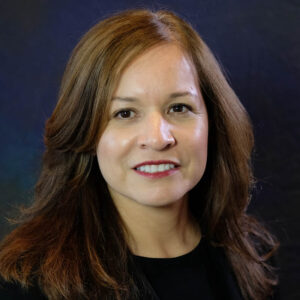Southern California’s transportation leadership is at the forefront of the dual challenge of meeting state mandates to reduce vehicle miles traveled (VMT) while improving mobility. It’s a commonly cited statistic that the transportation sector is responsible for approximately 38 percent of greenhouse gas (GHG) emissions in the state.[1] In fact, the California Air Resources Board (CARB) 2022 Scoping Plan recognizes the need to address the transportation sector specifically by encouraging local governments to adopt CEQA-qualified Climate Action Plans (CAPs) to address three priority areas: transportation electrification, VMT reduction, and building decarbonization. With two of the three priority areas within the realm of transportation, transportation leaders are facing the road ahead with a renewed focus.
While Southern California continues to feel the effects of climate change, including one of the wettest winters on record, leaders in the transportation community have a vested interest in reducing GHG emissions associated with transportation with the added challenge of improving access to and convenience of mobility within the region.
Impact Sciences spent some time reconnecting with industry colleagues at recent conferences to get their opinions on the challenges and opportunities facing transportation in Southern California. Several key themes emerged around connectivity and new transit infrastructure.
Multi-Modal Connectivity
Connectivity was the major theme of our discussions. Southern California’s traditional mode of transportation is the single-occupancy vehicle, and many cities and communities in the region were built with the car in mind. This can be seen in the freeways that crisscross the region down to the mini strip malls set back from the main street with a sea of parking in front of the buildings. Multi-modal transportation encourages a variety of modes of transport including trains, buses, bicycles, walking, scooters, and more. However, many existing roadways do not have adequate bus, rail, bicycle and/or pedestrian infrastructure and it can be difficult to add these facilities on an existing road without expanding the right of way. Experts in the field indicate that a little bit of creativity can go a long way to make our streets safe for not just motorists, but bus and rail patrons, bicyclists and pedestrians.

LA Metro Bike Share at Downtown Santa Monica Station
The goal of multi-modal transportation is to have a successful and accessible transit system and connect different modes to reduce congestion. Projects that pair dedicated bus lanes with bicycle and pedestrian infrastructure are the most successful as they allow people to reach their destinations as seamlessly as possible. Many agencies and municipalities have made a U-turn and are now championing multi-modal transportation systems in order to accommodate people of all ages and needs. These first and last mile connections make it easier for people to use multiple modes of transportation and reduce the need to use a vehicle from point A to B. The state has recognized the challenges facing transportation professionals in implementing these projects, and in response, the Governor signed Senate Bill (SB) 922, now Section 21080.25 of the Public Resources Code, which creates a new Statutory Exemption under CEQA for active transportation projects. This Statutory Exemption is a full CEQA exemption, meaning no CEQA analysis is required. However, there are specific requirements for projects valued at over $50 million and $100 million. Several agencies including the Los Angeles County Metropolitan Transportation Authority (LA Metro) and the City of San Francisco have used this exemption, and we expect its use to continue to grow as more multi-modal projects are implemented.
Post-Pandemic Outcomes

2028 Olympics are to be held at the Los Angeles Memorial Coliseum
Another challenge facing our industry is the lingering effects of the COVID-19 pandemic on our transit system. While many transit systems, such as Metrolink, have restored ridership to near pre-pandemic levels, many others are still battling low ridership. While the long-term impact of remote work is still being determined, it’s clear that travel patterns have changed as a result of COVID-19. Many people are no longer required to endure morning / evening commutes into downtown Los Angeles or similar urban centers.[2],[3] The changing economic landscape also has some transportation professionals wondering what comes next. Economic concerns, such as high interest rates and discussions of a looming recession, could impact the region’s economy, particularly in the goods movement sector. However, with 2028 and the Los Angeles Olympics just around the corner, the demand for goods and efficient infrastructure does not seem to be waning.
Projects on the Horizon

LAX People Mover under construction, February 2020.
While there are undoubtedly many challenges facing the transportation industry in the region, there are some exciting transit and mobility projects happening that Impact Sciences and our partners are looking forward to, including local open space trails that promote bicyclist and pedestrian mobility, improving safety, recreational opportunities, and active modes of transportation. Rail infrastructure is also rapidly expanding, with the Brightline West High Speed Rail Project that will connect Los Angeles and Las Vegas, and the Redlands Passenger Rail Project (Arrow), that opened October 24, 2022, that takes passengers from San Bernardino to the University of Redlands. The Tunnel to Ontario International Airport Project will provide direct access between the Cucamonga Metrolink Station and the Ontario International Airport. The Automated People Mover at LAX Airport, an electric train system on a 2.25 mile elevated guideway with six stations, is also due to open soon for passenger service. Lastly, our team is most excited for LA Metro’s Regional Connector, which was completed in June of 2023. The new A Line offers improved access to Impact Sciences’ office adjacent to the 7th and Metro station.
In order to serve our clients’ mobility projects with the most accurate environmental reviews, our team keeps a pulse on the industry to be sure we are always up to date on the latest methods. As a core service area offered by Impact Sciences, our team has completed environmental review for numerous mobility projects throughout California, including CEQA analysis for bus rapid transit, pedestrian, and bike improvements; intelligent transportation system (ITS) projects; and others. We also provide our clients with guidance on how to use new statutory exemptions or categorical exemptions that might apply to their projects.
Mobility is constantly evolving, so let’s talk more about it. We’d love to hear from you! Shoot us a message.
Impact Sciences’ Annalie Sarrieddine and Jessica Kirchner contributed to this article.
References
[1] California Air Resources Board, Current California GHG Emission Inventory Data , 2022. Available at: https://ww2.arb.ca.gov/ghg-inventory-data , accessed June 27, 2023.
[2] Haley Smith, “L.A. traffic behavior is changing. Is post-pandemic gridlock inevitable?” Los Angeles Times, June 2021. Available at: https://www.latimes.com/california/story/2021-06-18/post-covid-l-a-traffic-analysis-has-rush-hour-changed, accessed January 12, 2023.
[3] Katherine Shaver, “Why hybrid work schedules have made some commutes worse,” The Washington Post, September 2022. Available at: https://www.washingtonpost.com/transportation/2022/09/16/hybrid-work-schedules-pandemic-commuting/, accessed January 12, 2023.
Photos: LA Metro; Los Angeles Memorial Coliseum; Los Angeles World Airports.


 Brett Pomeroy, Associate Principal, has more than 17 years of professional experience in the environmental planning field with an emphasis in environmental compliance pursuant to CEQA and the National Environmental Policy Act (NEPA). Brett possesses a strong technical background and has provided quantitative analytical modeling support for air quality, GHG, health risk assessments, noise and vibration, and shade/shadow impact analyses for several complex and multi -faceted projects using industry accepted modeling software. Specifically, Brett has experience with AERMOD and ISC air dispersion modeling systems, CalEEMod, URBEMIS, CALINE4-based model, noise modeling based on the Federal Highway Administration’s Traffic Noise Model (TNM), and the Amethyst Shadow Calculator. In addition to providing technical support, Brett conducts environmental analyses for a wide array of environmental issues, conducting land use surveys, ambient noise monitoring, site photography, general environmental research and document management. Brett’s experience includes preparing and managing environmental documentation for both private- and public-sector clients. He has provided environmental analyses to support several types of environmental documents including Categorical Exemptions, Initial Studies, Negative Declarations (NDs), Mitigated Negative Declarations (MNDs), Mitigation Monitoring & Reporting Programs (MMRPs), Environmental Impact Reports (EIRs), and addendums.
Brett Pomeroy, Associate Principal, has more than 17 years of professional experience in the environmental planning field with an emphasis in environmental compliance pursuant to CEQA and the National Environmental Policy Act (NEPA). Brett possesses a strong technical background and has provided quantitative analytical modeling support for air quality, GHG, health risk assessments, noise and vibration, and shade/shadow impact analyses for several complex and multi -faceted projects using industry accepted modeling software. Specifically, Brett has experience with AERMOD and ISC air dispersion modeling systems, CalEEMod, URBEMIS, CALINE4-based model, noise modeling based on the Federal Highway Administration’s Traffic Noise Model (TNM), and the Amethyst Shadow Calculator. In addition to providing technical support, Brett conducts environmental analyses for a wide array of environmental issues, conducting land use surveys, ambient noise monitoring, site photography, general environmental research and document management. Brett’s experience includes preparing and managing environmental documentation for both private- and public-sector clients. He has provided environmental analyses to support several types of environmental documents including Categorical Exemptions, Initial Studies, Negative Declarations (NDs), Mitigated Negative Declarations (MNDs), Mitigation Monitoring & Reporting Programs (MMRPs), Environmental Impact Reports (EIRs), and addendums. Kara Yates Hines, Director of Operations and Publications Manager, leads operations at Impact Sciences and oversees the production and publication of all environmental documents. She has more than 14 years of combined experience in publishing, quality control coordination, science and public health technical writing and editorial review, and digital marketing methodologies. As the primary manager for document production, Kara implements the firm’s operational processes and manages the document publishing flow, including QA/QC review, graphic design, formatting, and visual layout. She leads in-house production of CEQA/NEPA reports, including booklet assembly and digital productions. With a unique understanding of both the CEQA review process and best practices in publishing technically complex documents, Kara ensures the firm’s environmental reports are publicly accessible, easy to read and understand, well organized, and visually appealing. Kara has a masters degree in Publishing from The George Washington University and a bachelors degree in English from Spelman College. She is a member of the Association of Environmental Planners (Los Angeles Chapter).
Kara Yates Hines, Director of Operations and Publications Manager, leads operations at Impact Sciences and oversees the production and publication of all environmental documents. She has more than 14 years of combined experience in publishing, quality control coordination, science and public health technical writing and editorial review, and digital marketing methodologies. As the primary manager for document production, Kara implements the firm’s operational processes and manages the document publishing flow, including QA/QC review, graphic design, formatting, and visual layout. She leads in-house production of CEQA/NEPA reports, including booklet assembly and digital productions. With a unique understanding of both the CEQA review process and best practices in publishing technically complex documents, Kara ensures the firm’s environmental reports are publicly accessible, easy to read and understand, well organized, and visually appealing. Kara has a masters degree in Publishing from The George Washington University and a bachelors degree in English from Spelman College. She is a member of the Association of Environmental Planners (Los Angeles Chapter). Martha Lira, Chief Financial Officer, oversees all aspects of Impact Sciences’ finances, including the development and management of budgets, preparation of financial statements, and all other financial reporting to the firm’s Chief Operating Officer. Martha brings to Impact Sciences over 25 years of business management experience in the public, private, and nonprofit sectors. Prior to joining Impact Sciences, Martha worked for a women-owned CPA firm as a staff accountant, managing small business accounts and tax filing requirements.
Martha Lira, Chief Financial Officer, oversees all aspects of Impact Sciences’ finances, including the development and management of budgets, preparation of financial statements, and all other financial reporting to the firm’s Chief Operating Officer. Martha brings to Impact Sciences over 25 years of business management experience in the public, private, and nonprofit sectors. Prior to joining Impact Sciences, Martha worked for a women-owned CPA firm as a staff accountant, managing small business accounts and tax filing requirements. Lynn Kaufman, Associate Principal, has more than 25 years of experience in both the management and preparation of environmental review documents pursuant to CEQA and NEPA for clients in both the public and private sector. Ms. Kaufman has written numerous CEQA analyses for high profile and environmentally sensitive projects in both urban and rural settings, and acts as a day-to-day contact for in-house and agency staff, subconsultants, and applicants, providing valuable insight to identify environmental constraints and feasible mitigation measures.
Lynn Kaufman, Associate Principal, has more than 25 years of experience in both the management and preparation of environmental review documents pursuant to CEQA and NEPA for clients in both the public and private sector. Ms. Kaufman has written numerous CEQA analyses for high profile and environmentally sensitive projects in both urban and rural settings, and acts as a day-to-day contact for in-house and agency staff, subconsultants, and applicants, providing valuable insight to identify environmental constraints and feasible mitigation measures. Douglas Kim, AICP, Managing Principal, oversees Northern California environmental services for Impact Sciences. His 30-year career includes political, policy, and technical expertise in transportation, air quality, and land use planning. Mr. Kim has prepared and reviewed CEQA and NEPA documents for land use and transportation projects and authored guidance documents on how to perform air quality analyses for two air pollution control districts. He has performed noise, vibration, climate change, and traffic impact analyses for over 100 CEQA environmental analyses throughout California. Mr. Kim has developed long- and short-range multi-modal transportation plans, including performing alternatives analyses, and managing technical modeling. He has managed preparation of air quality plans, developed air quality regulations, climate action plans, and performed air quality analysis and dispersion modeling for land use plans and development projects throughout the state.
Douglas Kim, AICP, Managing Principal, oversees Northern California environmental services for Impact Sciences. His 30-year career includes political, policy, and technical expertise in transportation, air quality, and land use planning. Mr. Kim has prepared and reviewed CEQA and NEPA documents for land use and transportation projects and authored guidance documents on how to perform air quality analyses for two air pollution control districts. He has performed noise, vibration, climate change, and traffic impact analyses for over 100 CEQA environmental analyses throughout California. Mr. Kim has developed long- and short-range multi-modal transportation plans, including performing alternatives analyses, and managing technical modeling. He has managed preparation of air quality plans, developed air quality regulations, climate action plans, and performed air quality analysis and dispersion modeling for land use plans and development projects throughout the state. John R. Anderson, M.A., M.Phil., is Associate Principal for the Northern California-Oakland office. With more than 30 years of experience, John brings to Impact Sciences extensive knowledge of the regulatory, environmental health and safety, and environmental planning industries. He has a long track record for managing large environmental programs and projects across North America. Most recently, John has focused his attention on the Corrections, Education, Energy and Water planning and compliance markets. In California, he has managed the Environmental Planning Program for the Los Angeles Unified School District; prepared Program EIRs for various water authorities and school districts; performed due diligence for public and private sector clients in real estate and corporate acquisitions; and has been retained as an expert witness in relation to school, transportation, and remediation projects. John has a seasoned familiarity with project management, staff development, and financial and administrative management. He’s provided strategic leadership for projects in the areas of CEQA/NEPA environmental impact reporting, risk management, preliminary endangerment assessments, Phase I and follow-on invasive site investigations, litigation support, QA/QC programs, public participation programs, and site safety programs. Impact Sciences is proud to have John as a vital member of our firm.
John R. Anderson, M.A., M.Phil., is Associate Principal for the Northern California-Oakland office. With more than 30 years of experience, John brings to Impact Sciences extensive knowledge of the regulatory, environmental health and safety, and environmental planning industries. He has a long track record for managing large environmental programs and projects across North America. Most recently, John has focused his attention on the Corrections, Education, Energy and Water planning and compliance markets. In California, he has managed the Environmental Planning Program for the Los Angeles Unified School District; prepared Program EIRs for various water authorities and school districts; performed due diligence for public and private sector clients in real estate and corporate acquisitions; and has been retained as an expert witness in relation to school, transportation, and remediation projects. John has a seasoned familiarity with project management, staff development, and financial and administrative management. He’s provided strategic leadership for projects in the areas of CEQA/NEPA environmental impact reporting, risk management, preliminary endangerment assessments, Phase I and follow-on invasive site investigations, litigation support, QA/QC programs, public participation programs, and site safety programs. Impact Sciences is proud to have John as a vital member of our firm. Jessica Kirchner, AICP, President, also serves as the Managing Principal for the firm. Jessica’s corporate responsibilities include contract compliance and financial management with an eye toward strategic growth. Jessica has more than two decades of project work in CEQA/NEPA compliance and places an emphasis on meeting client needs and providing real-world solutions to common CEQA pitfalls. A hands-on owner, Jessica frequently serves in multiple roles on projects, including contract and project manager, as well as conducting and writing environmental analyses all while overseeing the firm’s most high-profile clients, revenue and growth of the firm. With a background in journalism, Jessica’s emphasis on clear, concise documents that are not overly complicated has become a company hallmark, along with the ability to deliver projects on unbelievably tight deadlines. She is highly skilled at taking technical documents and concepts and translating them into reader-friendly concepts.
Jessica Kirchner, AICP, President, also serves as the Managing Principal for the firm. Jessica’s corporate responsibilities include contract compliance and financial management with an eye toward strategic growth. Jessica has more than two decades of project work in CEQA/NEPA compliance and places an emphasis on meeting client needs and providing real-world solutions to common CEQA pitfalls. A hands-on owner, Jessica frequently serves in multiple roles on projects, including contract and project manager, as well as conducting and writing environmental analyses all while overseeing the firm’s most high-profile clients, revenue and growth of the firm. With a background in journalism, Jessica’s emphasis on clear, concise documents that are not overly complicated has become a company hallmark, along with the ability to deliver projects on unbelievably tight deadlines. She is highly skilled at taking technical documents and concepts and translating them into reader-friendly concepts.